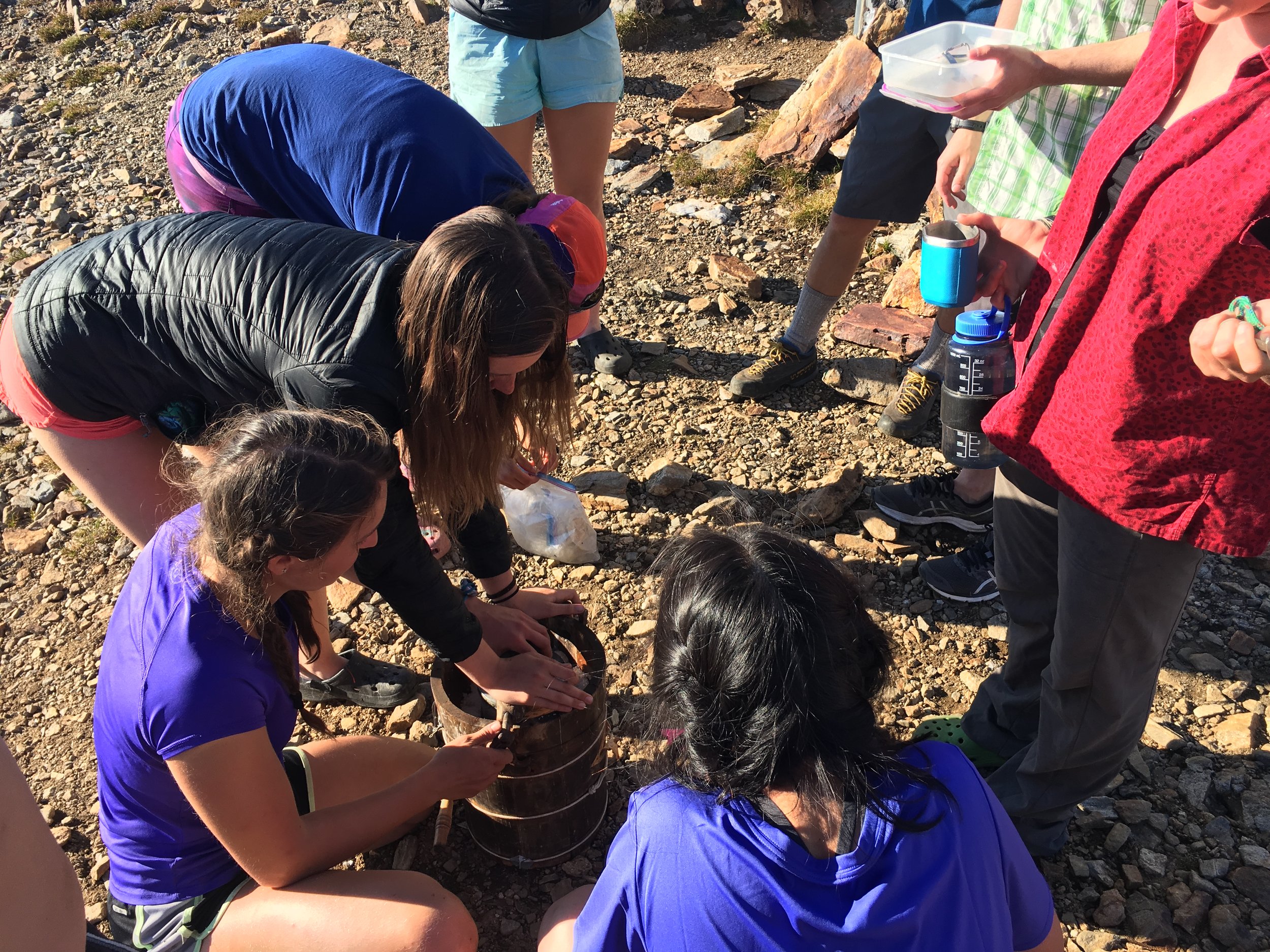by Carly Onnik
‘’Do what you can, with what you have, where you are." -Theodore Roosevelt
This quote is a JIRP mantra, and it comes in handy while living on a remote nunatak for two months with fifty scientists. It drives us to improvise to reach our goals. Looking around camp, it doesn’t take long to see such improvisations, which we affectionately describe as ‘’JIRP-y.’’ The benches and counters are made of wooden skis; parachute-cord becomes clothes lines; rocks are seats; and used cans are mugs for students who've forgotten theirs.
Cooking on the icefield is no exception to this improvisation. We have a set inventory of food in each helicopter load with which the cooks can play. Between meals, we snack on pilot bread- round, hard crackers- topped with peanut butter and jelly. To spice up our diet, sometimes JIRPers have to get creative with our limited resources.
A helicopter bringing in a fresh load of food to help the cooks with their improvisation.
At Camp 17, myself and a staffer, Allie Strel, decided to put a dream into action: to make hand churned ice cream. Molly Peek, Lead Logistician based in Juneau, had hiked in for a quick visit, hauling with her a gallon of heavy whipping cream in her pack. Allie and I set our sights on vanilla chai flavoring.
Each camp is home to a mix of antique machinery, objects and parts, legacies of JIRP's many years of programming. During staff training, Allie had discovered two ice cream makers at C17—one with a broken crank and one with a broken barrel.
We took the good crank, and the good barrel, and got to work.
Step 1: Scrub the rust from the inner barrel with vinegar and vigor.
Step 2: Reinforce the outer wooden barrel with metal wire for structural integrity.
Step 3: Affix the currently mismatched crank and barrel together, with a power tool to cut notches in the wooden barrel.
Step 4: Grease the crank with WD40 for smooth churning.
Step 5: Guess the rock salt to snow ratio for the slurry that goes in between the inner and outer barrel.
Step 6: Insert ingredients into inner barrel, and churn!
Author Carly Onnink and Grace Stephenson finish cranking the ice cream maker as excited JIRPers cue for ice cream. Photo by Hannah P Mode.
Like any true scientific experiment, we did not succeed first time. I had to explain to many JIRPers that the promised ice cream simply hadn't churned—yet. Ally and I brainstormed possible variables and ways to set up our next trial. We decided to add more rock salt. A lot more rock salt.
We took turns churning, and as we did, asked each other, "Should it be creamy yet? Should we add more salt? Is this the right churning rate?" After half an hour, the creamy mixture was getting harder and harder to cranker. A third person needed to hold the lid down while we cranked, and then the ice cream was oozing out of the container.
Carly Onnink celebrates a successful batch of ice cream on the icefield. Photo by Hannah P Mode.
A sweet victory. JIRPers lined up with their mugs. We shovelled ice cream in. The sun was setting over the Ptarmigan side of the nunatak, and the moment seemed to capture another of my favorite JIRP mantras:
success = talent x hard work [squared]



